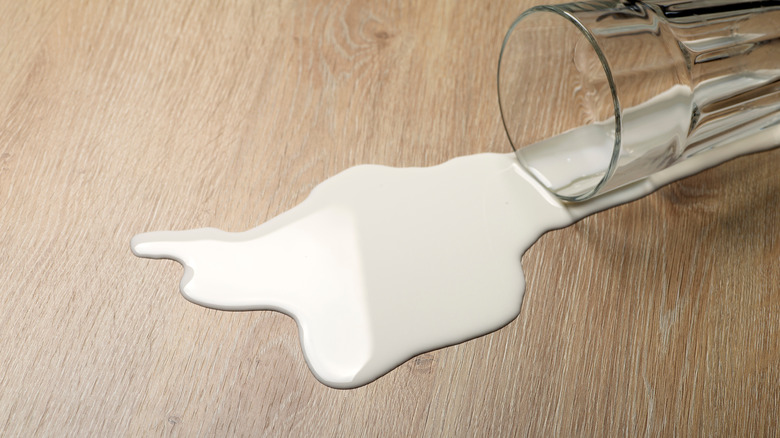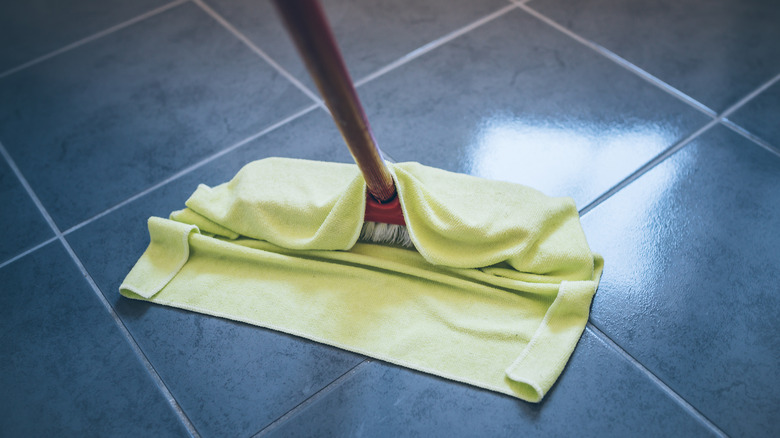The Spilled Milk Floor Cleaning Hack You May Want To Avoid
Not only were Victorians not crying over spilled milk, they were using it to clean. Sour milk was a popular cleaning product to use on flagstone floors during that time, and this old cleaning method has recently been experiencing a bit of a renaissance. While milk can be an effective cleaner on the right type of stone, be sure to do your research before giving it a try yourself.
English Heritage, the organization that manages many historic buildings and sites in the U.K., tested a variety of traditional cleaning methods on their properties and had surprisingly positive results with using milk to clean stone. They had the best results using skim milk — – milk with higher fat content tended to leave spots. Amber Xavier-Rowe, the head of collections conservation for English Heritage, told The Telegraph that after the successful experiment, the organization would be using milk to clean the floors at several historic houses.
But just because an antiques conservation group does something, does that mean you should?
Disadvantages and alternatives to cleaning floors with milk
Considering what a positive experience English Heritage had using milk as a floor cleaner, you may want to give it a try as well. Before you get started, though, make sure your floor is a nonporous flagstone. Using milk on porous or damp stones can actually cause staining. Check what, if any, wax or sealant may be on your floor, as well. Stone floors with sealant on them may not respond as well to milk cleaning. It hopefully goes without saying that this hack isn't appropriate for wood or carpeted floors.
If you opt to give skim milk a try as a floor cleaner, be sure to test a small corner of the floor first, just as you would with any new cleaner. Rub a small amount of skim milk onto the stone and make sure you aren't leaving any puddles. English Heritage didn't find that the milk left an odd smell or stains, but if you'd prefer to avoid milk as a cleaning product then any pH neutral product advertised as safe for natural stone should be a good alternative to keep your floors looking like new. Vinegar is also a good cleaning option for some floors but remember that some stone floors can't be cleaned with vinegar.

